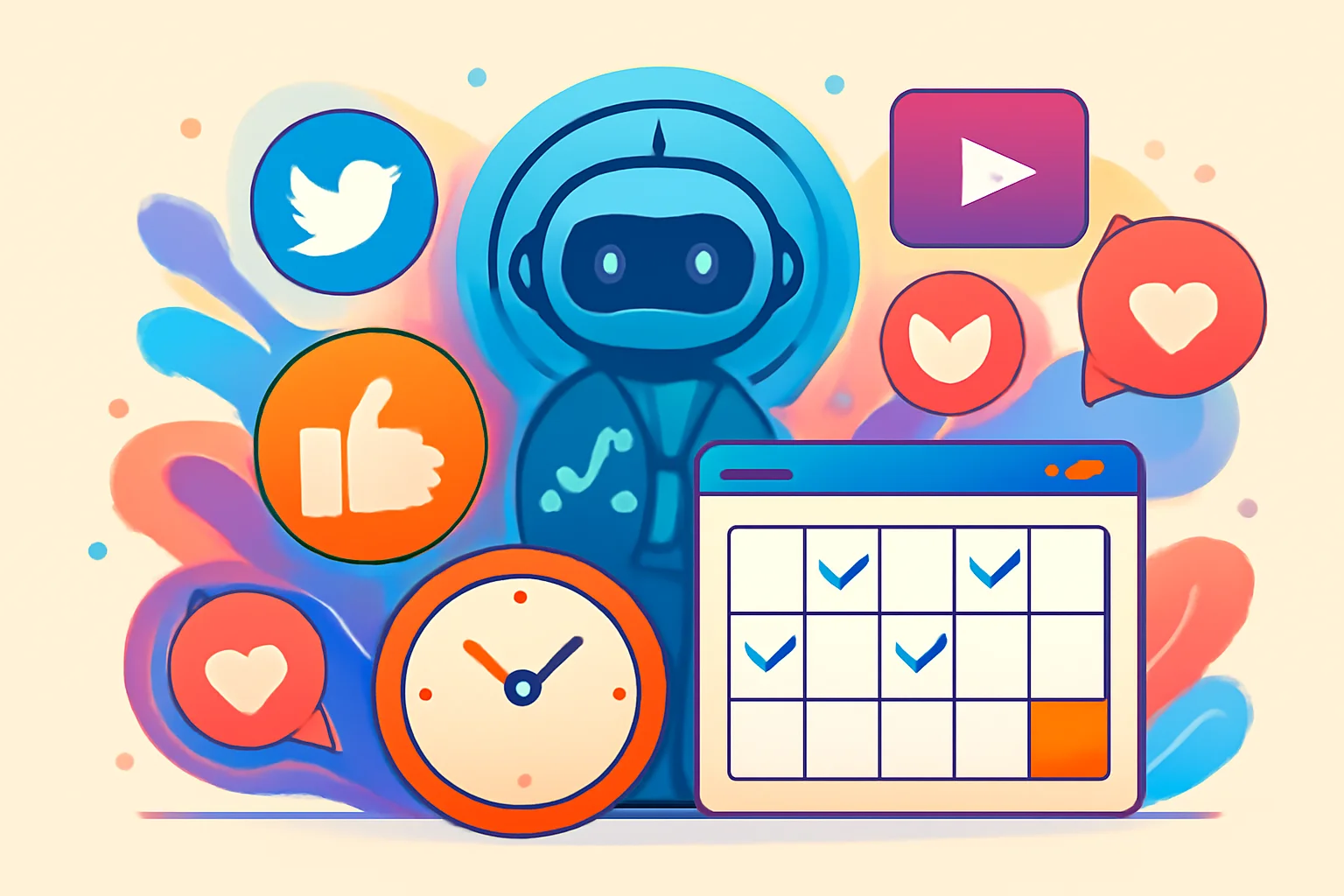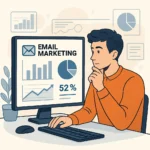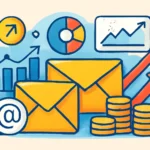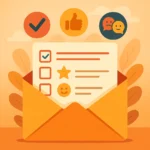Now Reading: Transform Your Inbox Strategy with AI-Driven Email Marketing Campaigns
-
01
Transform Your Inbox Strategy with AI-Driven Email Marketing Campaigns
Transform Your Inbox Strategy with AI-Driven Email Marketing Campaigns

Last month, my client’s email open rates were stuck at a dismal 12%. After implementing AI-driven email marketing campaigns, that number jumped to 32% in just three weeks. The difference wasn’t magic-it was smart technology working behind the scenes to optimize everything from send times to subject lines. I’m excited to share exactly how you can achieve similar results.
Key Takeaways
How to use AI to improve email marketing campaigns:
- Personalize content beyond just using customer names-AI analyzes behavior patterns to create truly individualized messages
- Optimize send times by using AI to determine when each recipient is most likely to open emails
- Create compelling subject lines with AI tools that analyze what drives higher open rates
- Segment your audience more effectively using AI-powered behavioral analysis
- Automate content creation while maintaining brand voice and relevance
- Use predictive analytics to forecast campaign performance and make data-driven adjustments
- Implement continuous optimization through real-time A/B testing managed by AI
Personalization That Goes Beyond First Names
Let’s be real-nobody is impressed by seeing their name in an email anymore. That’s table stakes. What AI brings to the table is personalization that feels almost eerily relevant.
AI analyzes individual customer data including past interactions, purchase history, and browsing behaviors to create truly tailored content for each recipient. This isn’t just about product recommendations (though those are powerful too)-it’s about adjusting messaging tone, content topics, and even visual elements based on what resonates with each person.
For example, one of my clients in the fashion industry used AI to analyze not just what products customers had purchased, but how they browsed the website. The AI noticed that some customers spent more time looking at product details and specifications, while others were more influenced by lifestyle images. We then automatically adjusted email content to emphasize technical details or aspirational imagery based on these preferences.
The result? A 28% increase in click-through rates and a 15% boost in conversions from email.
To implement this level of personalization:
- Connect your email platform with your customer data platform or CRM
- Ensure you’re tracking website behavior and purchase history
- Use an AI tool that can analyze this data to identify patterns
- Create dynamic content blocks that adjust based on user preferences
- Test and refine your personalization rules regularly
Send Time Optimization That Actually Works
Timing is everything in email marketing. Send at the wrong time, and your carefully crafted message gets buried under 50 other unread emails.
AI takes the guesswork out of timing by analyzing when individual recipients are most likely to open and engage with emails. This isn’t just about general best practices like “Tuesday mornings are good for B2B”-it’s about understanding each person’s unique email checking habits.
I implemented send time optimization for a SaaS client and saw open rates improve by 23% almost immediately. The AI discovered patterns we never would have found manually-like a segment of users who were most responsive during late evening hours, completely contrary to conventional wisdom.
To optimize your send times with AI:
- Use an email platform with built-in send time optimization features
- Allow the system to gather data over several campaigns
- Be patient-AI needs time to learn patterns
- Consider time zones and regional differences
- Don’t override the AI with manual timing unless absolutely necessary
Useful Articles:
AI-Generated Subject Lines That Get Opened
Subject lines can make or break your email campaign. I’ve spent countless hours brainstorming the “perfect” subject line, only to see mediocre open rates.
AI subject line generators analyze what phrases, lengths, and emotional triggers resonate most with different segments of your audience. They can test variations in real-time and learn from the results.
One retail client I worked with saw a 35% increase in open rates after implementing AI-generated subject lines. The AI consistently created subject lines that I wouldn’t have thought of-and they worked better than my “creative” attempts.
Some effective AI-generated subject line examples I’ve seen work well:
- “We saved your cart for you” (for abandoned cart emails)
- “Your shopping bag misses you!”
- “Complete your order for [Product Name] today!”
- “[First Name], we found something you might love”
- “Based on your last purchase, you’ll want to see this”
To create better subject lines with AI:
- Use tools that can analyze your past campaign performance
- Test emotional triggers versus practical information
- Implement A/B testing to compare AI-generated options
- Look for patterns in what works for different segments
- Don’t be afraid of subject lines that seem unconventional
Predictive Segmentation Based On Behavior
Traditional segmentation might group customers by age, location, or past purchases. AI-powered segmentation looks at subtle patterns like:
- How users navigate through your website
- Which email links they click on most frequently
- Time spent viewing certain products
- Abandonment patterns
- Social media engagement with your brand
I worked with an e-commerce client who was struggling with cart abandonment. Using AI segmentation, we identified three distinct types of abandoners:
- Price-sensitive shoppers who were waiting for discounts
- Comparison shoppers who needed more product information
- Distracted shoppers who simply forgot to complete their purchase
We created different email sequences for each segment, and saw recovery rates improve by 42% compared to the generic abandonment emails they were sending before.
To implement AI-powered segmentation:
- Collect comprehensive behavioral data across channels
- Use an AI platform that can identify patterns in this data
- Create segment-specific content that addresses the unique needs of each group
- Continuously refine your segments as the AI learns more about your audience
- Test different approaches for each segment to optimize performance
Dynamic Content That Adapts To User Interests
Once you’ve segmented your audience, AI can help you create dynamic content blocks that change based on recipient interests and behaviors.
For example, a travel client I worked with used AI to analyze which destinations customers browsed most frequently. Their email newsletters would automatically feature different hero images and destination spotlights based on each recipient’s browsing history.
This level of customization would be impossible to manage manually, but AI handles it effortlessly. The result was a 52% increase in click-through rates and a 31% increase in bookings directly attributed to email.
To implement dynamic content:
- Create a library of content modules that can be mixed and matched
- Set up rules for when each module should be displayed
- Use AI to continuously optimize these rules based on performance
- Ensure your email platform supports dynamic content insertion
- Test different combinations to find what works best
Useful Articles:
AI-Generated Email Copy That Converts
AI writing tools have come a long way. They can now generate email copy that sounds natural, aligns with your brand voice, and drives action.
I was skeptical about AI-generated copy until I tested it for a client’s newsletter. We provided the AI with some basic information about the featured products and our brand guidelines, and it created several variations of email copy. We A/B tested these against our manually written versions, and to my surprise, the AI versions performed 18% better in terms of click-through rates.
The key is to use AI as a starting point, then refine the output to ensure it matches your brand voice perfectly. I find that AI excels at creating:
- Product descriptions
- Promotional announcements
- Welcome series emails
- Cart abandonment reminders
- Re-engagement campaigns
To effectively use AI for email copy:
- Train the AI with examples of your best-performing emails
- Provide clear guidelines about your brand voice and messaging
- Edit the AI-generated content to add your unique perspective
- A/B test AI-written copy against your traditional approach
- Use AI to generate multiple variations for testing
Visual Content Optimization
AI isn’t just for text-it can also help optimize your email’s visual elements. Advanced AI tools can:
- Select images that historically perform best with specific segments
- Generate custom visuals based on user preferences
- Optimize image placement within emails
- Create personalized product collages
- Adjust color schemes based on user engagement data
One retail client I worked with used AI to analyze which product image styles (lifestyle vs. product-only) performed best with different customer segments. By automatically selecting the right image style for each recipient, they saw a 24% increase in product click-throughs.
To optimize visual content with AI:
- Tag your image library with detailed attributes
- Track which visual styles perform best with different segments
- Use AI tools that can select or generate images based on performance data
- Test different image placements and sizes
- Consider AI-generated personalized visuals for high-value campaigns
Real-Time A/B Testing
Traditional A/B testing might compare two subject lines or two call-to-action buttons. AI-powered testing can simultaneously evaluate dozens of variables, including:
- Subject lines
- Preheader text
- Send times
- Email layout
- Call-to-action placement and wording
- Image selection
- Content length
- Personalization elements
I implemented multi-variate testing for a B2B client’s lead nurturing emails. The AI tested 24 different combinations of subject lines, content blocks, and CTAs. Within three campaign cycles, we had identified combinations that performed 47% better than their previous best-performing emails.
To implement advanced A/B testing:
- Use an email platform with robust AI testing capabilities
- Start with testing the elements that typically have the biggest impact (subject lines, CTAs)
- Allow the AI enough send volume to gather statistically significant data
- Implement the winning variations automatically
- Continue testing new elements to avoid stagnation
Useful Articles:
Predictive Analytics For Campaign Planning
AI doesn’t just react to past performance-it can predict future outcomes based on historical data and current trends. This predictive capability helps you plan more effective campaigns from the start.
For example, AI can analyze your past campaign performance alongside seasonal trends, competitor activity, and even external factors like weather patterns or economic indicators to predict:
- Which products to feature in upcoming emails
- When engagement is likely to peak or drop
- Which segments will be most responsive to specific offers
- What type of content will resonate most at different times
- How changes in your email strategy might impact results
I used predictive analytics to help a seasonal business plan their email calendar. The AI identified optimal times to promote different product categories based on past purchase patterns and search trends. This approach led to a 29% increase in email-driven revenue compared to the previous year.
To leverage predictive analytics:
- Ensure your AI tool has access to comprehensive historical data
- Consider external factors that might influence customer behavior
- Use predictions to inform your content calendar and promotional strategy
- Compare actual results to predictions to improve future forecasts
- Don’t rely solely on predictions-continue testing new approaches
Sender Reputation Management
Email service providers use complex algorithms to determine whether your emails go to the inbox or the spam folder. AI tools can monitor your sender reputation and recommend adjustments to improve deliverability.
For a client with deliverability issues, I implemented AI-powered reputation management that:
- Analyzed engagement patterns to identify inactive subscribers
- Gradually reduced sending frequency to low-engagement segments
- Automatically suppressed high-risk addresses that could trigger spam filters
- Monitored IP reputation across different email service providers
- Adjusted sending volume and patterns to maintain optimal reputation
Within two months, inbox placement rates improved from 72% to 94%, dramatically increasing the effectiveness of all their email campaigns.
To manage sender reputation with AI:
- Monitor engagement metrics closely
- Implement sunset policies for inactive subscribers
- Use AI to identify optimal sending patterns
- Consider IP warming strategies for new sending domains
- Regularly clean your email list based on AI recommendations
Content Optimization For Spam Prevention
AI can analyze your email content to identify elements that might trigger spam filters. This goes beyond obvious spam words to include more subtle factors like:
- Text-to-image ratio
- Link density
- HTML complexity
- Phrase patterns associated with low-quality content
- Potential compliance issues with regulations like CAN-SPAM or GDPR
I helped a financial services client implement AI content scanning that flagged potential deliverability issues before sending. This pre-send analysis improved their inbox placement by 18% and helped them avoid potential regulatory issues.
To optimize content for deliverability:
- Use AI tools that can scan content for spam triggers
- Test emails across multiple platforms before sending
- Implement a content scoring system based on deliverability factors
- Balance promotional and informational content
- Use AI to suggest alternative phrasing for problematic content
Implementation Roadmap
If you’re convinced that AI-driven email marketing campaigns are worth exploring (and you should be!), here’s a practical roadmap for implementation:
- Audit your current email program to identify areas where AI could have the biggest impact
- Start with one AI capability rather than trying to implement everything at once
- Choose the right tools that integrate with your existing marketing stack
- Set clear success metrics to measure the impact of your AI implementation
- Train your team on how to work effectively with AI tools
- Gradually expand your AI capabilities as you see positive results
- Continuously refine your approach based on performance data
I’ve found that personalization and send time optimization typically provide the quickest wins, while more advanced capabilities like predictive analytics and content generation may require more setup time but ultimately deliver bigger long-term benefits.
The brands that embrace these capabilities now will build stronger customer relationships, drive higher conversion rates, and ultimately achieve better ROI from their email programs. So what are you waiting for? It’s time to let AI take your email marketing to the next level.





















